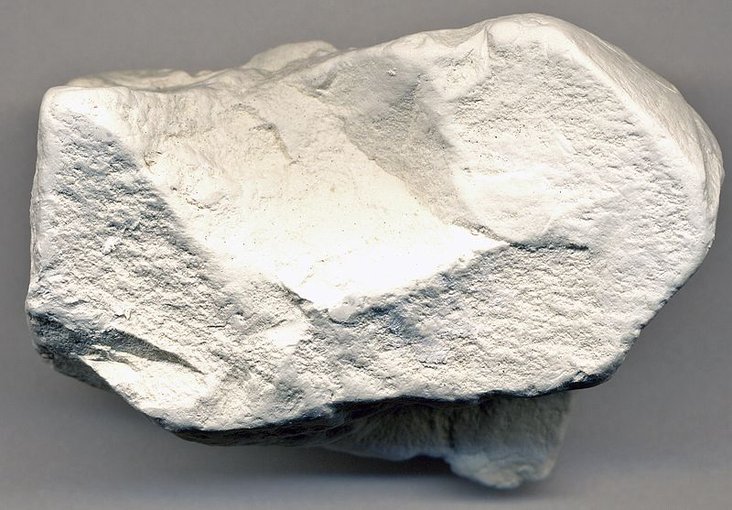
Nov. 29, 2018
Research Highlight
Details on Clay-Mineral Formation in Regolith

Kaolinite sample from Twiggs County, Georgia, USA.Image credit: James St. John, Wikimedia.
A recent study reveals pedological, mineralogic, and geochemical processes occurring in regolith. Regolith contains numerous materials of economic value, including kaolin; which is a product of argillization (or clay-mineral formation). Previous research on argillization products have focused on economic value rather than details on the processes behind their formation and alteration in the regolith itself.
Researchers analysed kaolin-regolith drillholes from a subtropical climate zone in China using a wide range of methods. The results provide insights into the role of weathering in kaolin formation in the regolith, and details about the material ranging from morphology to chemical profiles. The study outlines similarities between supergene kaolin regolith and shallow, biologically active soil deposits.
Understanding how materials in the regolith on Earth are formed and altered over time is important in comparative geology. This information is useful in interpreting geological observations on other worlds, such as Mars.
The study, “Surficial weathering of kaolin regolith in a subtropical climate: Implications for supergene pedogenesis and bedrock argillization,” was published in the journal Geoderma. The work was supported by NASA Astrobiology through the Exobiology Program.